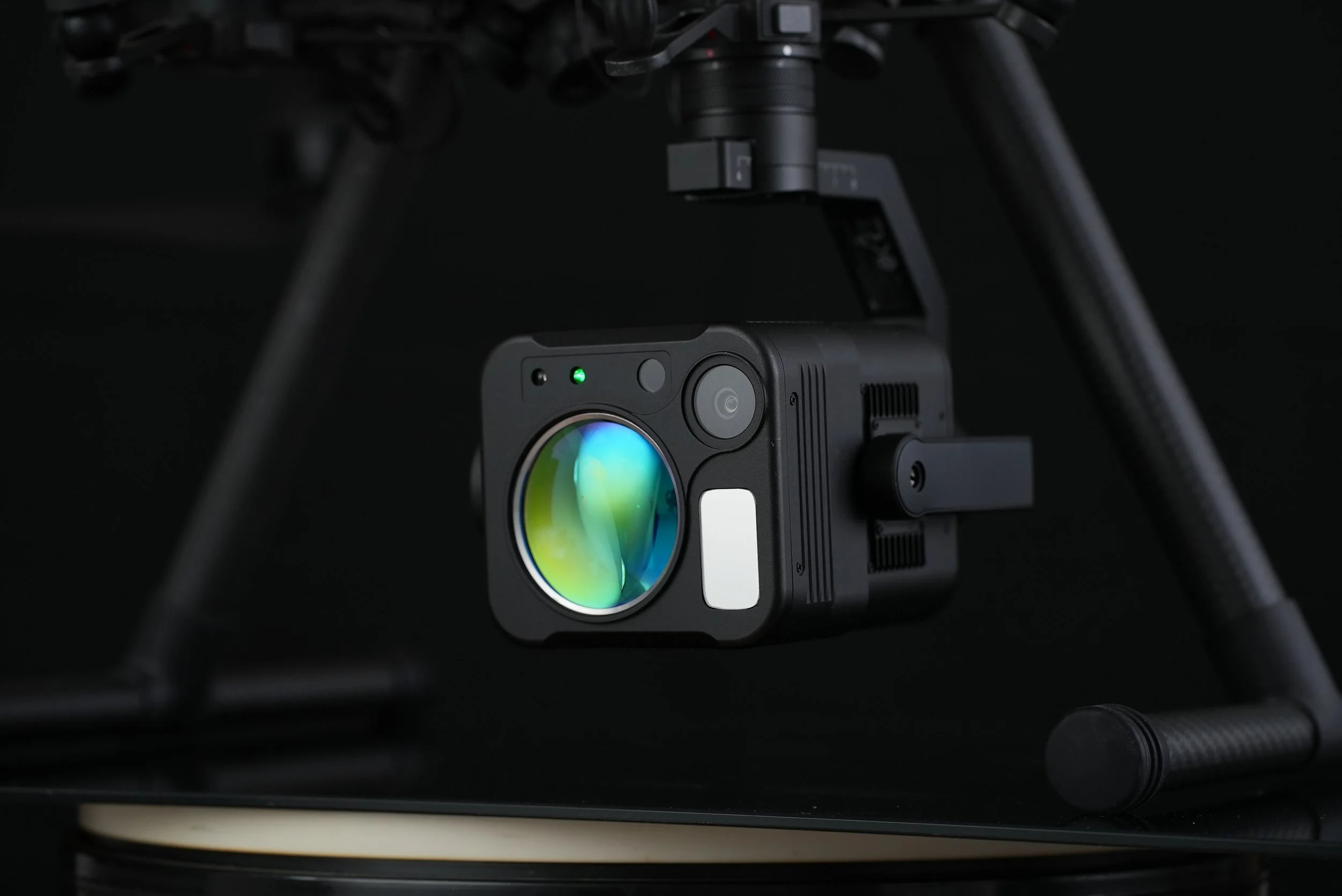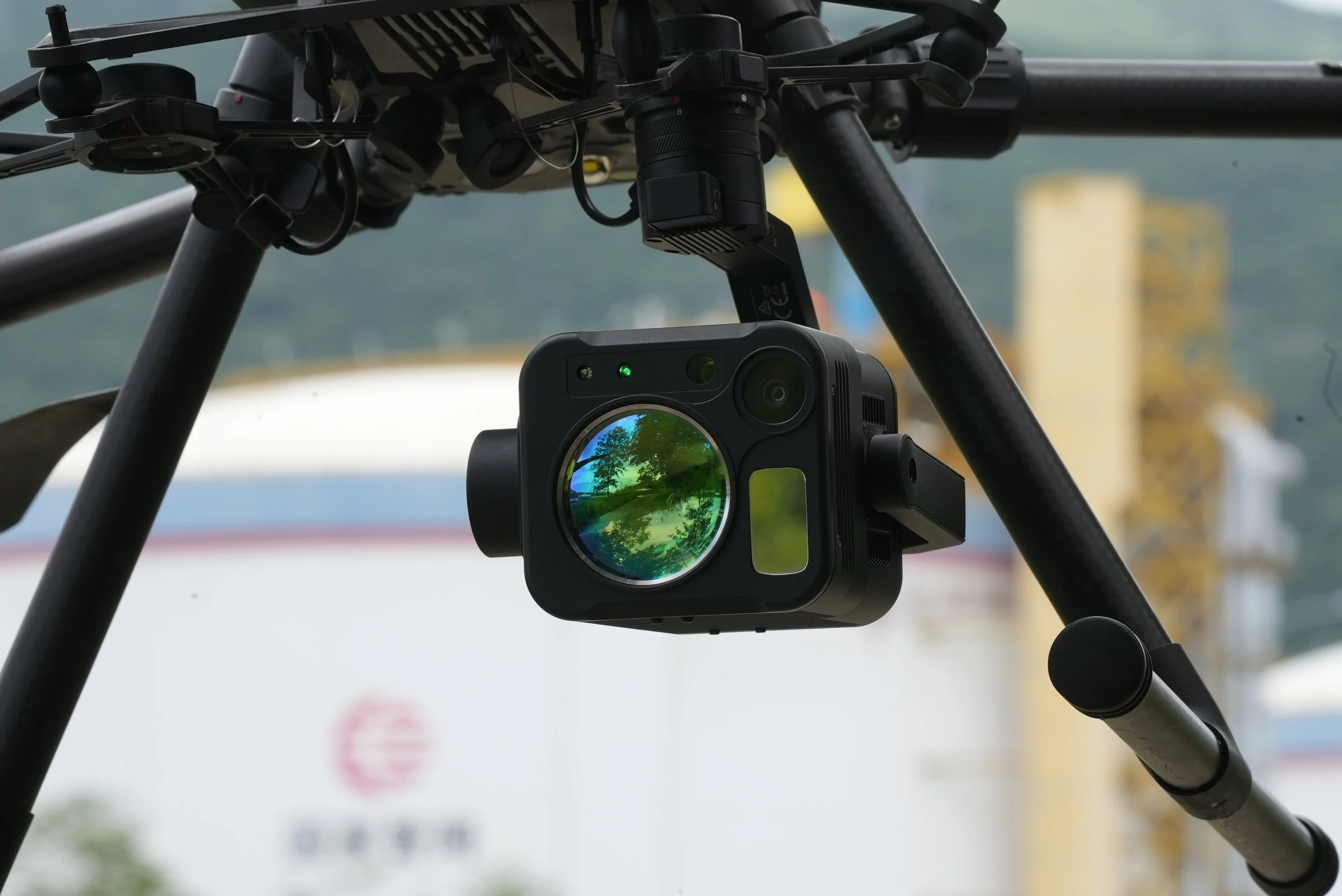Purway UAV TDLAS Methane Leak Detector Model III
Discover the Purway CH4 Laser Methane Leak Detector Model III, the latest innovation in UAV-mounted gas detection technology. This advanced detector is specifically designed for compatibility with the DJI Matrice 300 series and DJI Pilot 2 flight application, employing state-of-the-art TDLAS technology for unmatched precision in methane gas detection.
Key Features:
Extended Detection Range: A remarkable 300-meter detection capability.
Rapid Response: A swift 10ms reaction time for immediate detection.
Detailed reporting of concentration and GPS identification of leak location.
RGB camera with a 48MP sensor and up to 16× zoom capability
Features a powerful 1.2 km laser rangefinder for long-distance precision
Our device seamlessly merges a sophisticated detection laser and a visible light sensor, offering a dual advantage of precision and visual insight during methane inspections. The incorporation of intelligent gimbal stabilization technology further enhances accuracy, empowering users to swiftly identify and address potential safety hazards.
Opt for the Purway CH4 Laser Methane Leak Detector Model II for ensuring the utmost safety in the maintenance and operation of well sites, tanks batteries and natural gas pipelines. Elevate your safety and compliance standards with our cutting-edge solution
Purpose and Applications: Enhancing Gas Transmission Safety
Ensuring the integrity of gas transmission infrastructure is a paramount concern for operators. Traditional methods of monitoring pipeline tightness are often labor-intensive and time-consuming. Recognizing this challenge, Purway has innovated air-borne inspection methods, for well sites, tanks batteries and natural gas pipelines, enhancing compliance, efficiency and accuracy.
Our primary objective is to revolutionize natural gas leak detection. We achieve this by equipping unmanned aerial vehicles (UAVs) with advanced remote-sensing methane detectors. This approach has been thoroughly researched and developed, with extensive studies focusing on both artificial and real-world methane leak simulations.
Key Insights from Our Research:
Focused Experiments: Initial trials with artificial methane sources established baseline conditions for comprehensive field tests.
Real-World Testing: Subsequent experiments on actual sections of natural gas pipelines provided valuable, actionable data.
Data Analysis with AI: The collected measurement data, paired with spatial coordinates, were analyzed using sophisticated machine learning techniques. This analysis identified areas with elevated methane levels, demonstrating spatial correlations.
Optimizing Flight Parameters: Research highlighted the impact of UAV flight altitude and speed on detection accuracy. The Purway UAV Laser Methane Leak Detector Model II showed optimal performance at lower altitudes (50 to 200 meters) and moderate speeds (5-9m/s).
These findings confirm the effectiveness of the Purway UAV Laser Methane Leak Detector Model II as a preliminary tool for identifying potential leaks in natural gas infrastructure. Its optimized use at specified altitudes and speeds ensures precise, reliable, and efficient leak detection, marking a significant advancement in safety and compliance protocols.

CH-4 UAV Laser Methane Leak Detector Model III Specs
Detection Concentration Range: 0-99999 ppm*m
Sensor Measurement accuracy: ±10% (100~50000 ppm*m)
Response speed: 5ms, 10ms, 100ms (configurable)
Telemetry distance: Up to 300meters
Gimbal stabilization: YAW+PITCH+ROLL
Rotation: Pitch: +30° to -90°; Pan: ±135°
Camera Parameters: 48MP 16x Digital Zoom
Photo/Video Recording: 48MP resolution / 4K 30FPS
Video transmission: 1080P 30
1.2KM Long Distance Laser Rangefinder
Housing: Aluminum alloy
Gimbal: DJI Xport (can replace for 3rd party Drone)
Instrument weight: 759g
Protection level: IP44
Rated current: < 1 A Typical value 8V power supply current 0.3 A
Infrared Detection Wavelength: 1.65 um, <25 mW
Beam Divergence Size: Infrared laser divergence 3 mrad (6cm at 20m)
Laser safety level :ClassR, avoid direct laser eye exposure
Sensitivity: 5ppm*m
Detector Sampling frequency: 10Hz
Software Functions: KMZ import, tif terrain following, task report output
Supported Drone Models: DJI M400 RTK, M350 RTK, M300
Tunable Diode Laser Absorption Spectroscopy (TDLAS)
Specific molecules will absorb specific wavelengths of light. The absorption of light by a homogeneous medium(air mass) is proportional to the thickness and concentration of the air mass. Use the beam to illuminate the target and analyze the characteristics of the returned light to obtain the concentration
The UAV Laser Methane Leak Detector Model III Accessories
1x CH-4 Laser Methane Leak Detector
1x CH-4 Carry case
1x Manual book
1x Qualified card
1x Description of spare parts warranty period
1x Repair application form
1x After-sales service statement
1x Item list
Ask Our Stuff to Learn More about our Purway UAV Laser Methane Leak Detector
*Purway Sales and Support team Response in 24 hours.







